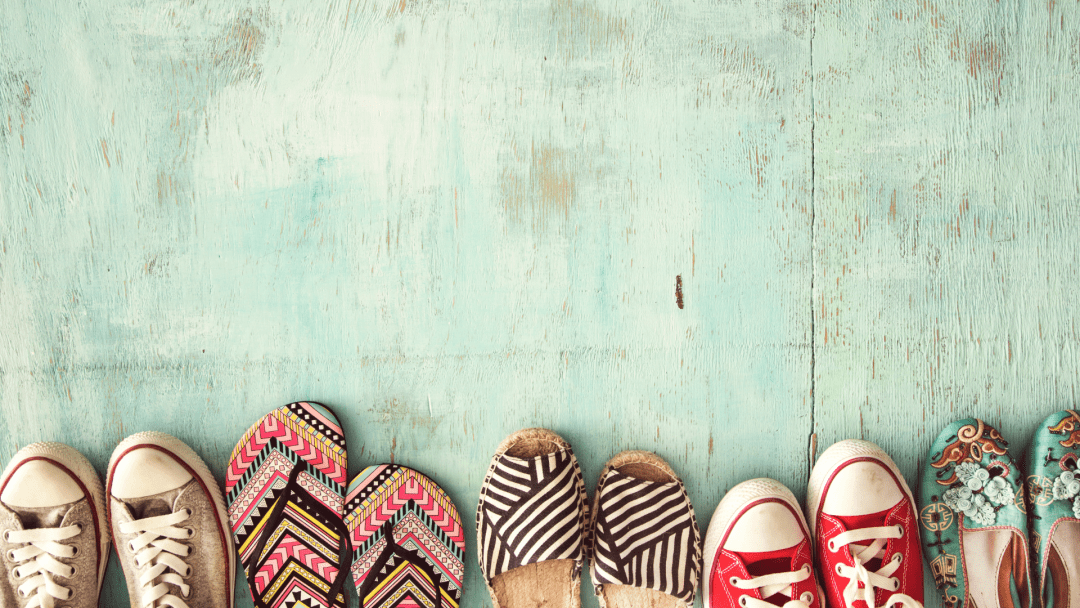Are Your Shoes to Blame for Bacteria-Laden Dirty Floors?

The right pair of shoes can make you feel invincible. Trail shoes help runners speed over sharp rocks and rough terrain. Anti-slip shoes help waiters whisk in and out of kitchens with grace. And, they protect us from the world of bacteria under our feet.
The world where we walk is a dirty place. And if you’re trying to keep your restaurant’s kitchen or your lab free of pathogens, don’t forget what’s wrapping your feet as you read this. They’re full of bacteria. According to Professor of Microbiology, Charles P. Gerba, the common shoe carries 421,000 bacterial units and a good number of those bacteria are fecal.
Where do we pick up these nasty germs? How do we keep our feet safe while keeping our work environments clean? Let’s dig in and find out!
Where Do We Pick Up Bacteria On Our Shoes?
Most people might assume that they only drag dirt into their environment from the outside. They’re wrong. Even dirt isn’t just dirt. A mere teaspoon of productive soil contains somewhere between 100 million and 1 billion bacteria.
When we leave work or home, we’re not just walking outside on dirt. We’re walking on sidewalks where other people have walked. We’re walking on bird feces and invisible amounts of dog feces and urine. And if you live in a city, you’re likely walking on discarded food and human waste in some places as well.
Even if you work in a clean environment like a kitchen, do you only stay in the kitchen? Do you wear a special pair of shoes to walk into the restroom?
Toilets that don’t have lids aerosol some of what you’re flushing and about 60% of those aerosolized particles escape the toilet entirely. This means that the floor of the restroom is probably blanketed in human feces and urine.
Even if you are doing your best to keep your work environment clean, if your shoes are dirty, your environment will be dirty.
Less Than Ideal Ways to Avoid Shoe Germs From Dirty Floors
If you run a clean or sterile environment, you’re always on the lookout for innovations in keeping your environment sterile or clean. Over the years, hospitals and labs have used various less than ideal solutions to keep shoes from contaminating environments. Let’s take a look.
Surgical Booties
For years, surgeons and support staff have used shoe coverings to avoid bringing dirt and germs into a sterile environment. These work by covering the shoe and either using a cinch tie or an elastic bungee to keep the opening tight over the shoe.
Surgical booties keep some germs out of the operating room and they allow the surgeon to continue to wear their favorite comfy shoes throughout a long surgery.
The downside? They can still snatch up germs on the way into the operating room. In the prep room, people are talking and sneezing and invisibly spraying their mouth germs all over the place. The bottoms of your surgical booties aren’t going to be sterile as soon as you start walking toward the O.R.
Shoe Baths and Mats
If you’ve ever traveled overseas, you may have used a shoe bath. Shoe baths are bristly rubber mats filled with sanitizing solution. And these work well if you’re going to be using rubber boots all day. But unless your work requires those boots, you’ll likely want to wear comfy shoes into your work environment.
If you’re walking through chemical agents each time you enter your sterile or clean environment, your shoes will suffer. The chemicals will seep into the cracks and slowly dissolve the glue in your shoe.
The chemicals in the shoe mat must be replaced often or the effectiveness of the mat decreases. Shoe decontaminant can be pricey and costs could go up.
Simple UVC Lights
Light is a powerful disinfectant. Ultraviolet disinfection can kill up to 99.9% of the germs on a surface it reaches. And using wands and UV light mats to disinfect surfaces or even water can be fairly effective.
The downside? UV light doesn’t reach all surfaces. Your shoes’ cracks and crannies are fomites. They collect germs and hide them from the light.
Yes, UV light is better than a bath mat or shoe booties, but it isn’t the best solution on its own.
The Most Effective Way To Disinfect Shoes
Light must have a clear path to reach a surface. It does not magically turn into a gas or a liquid to fill in holes and cracks. Thus, UV light on its own is not effective at clearing out fomites.
But what if you could create a gas using UV light and glass? And what if that gas could reach every surface on your shoe?
That’s what UVZone Shoe Sanitizer does.
It emits 185 to 254-nanometer ultraviolet wavelengths through a special glass to create ozone. The UV light doesn’t disappear when creating the ozone. It still reaches the surface of your shoes and disinfects the surface. The ozone then slips into the cracks and holes in your shoes and sanitizes places the light cannot reach.
It takes only eight seconds to disinfect your shoes. The entire unit is just a little larger than your bath scale and it doesn’t use expensive batteries to operate. You just plug it into a wall socket and it’s ready to go.
We tested the UVZone on seven of the most severe pathogens known to man. We found that the UVZone eliminated at least 99.98% of the enterococcus faecalis and 99.9993% of the candida auris in 10 seconds.
Dirty Shoes Will Foil Your Clean Efforts
Dirty floors are the most common source of pathogenic microorganisms.
If you’re trying to keep your work environment sterile, you need to keep your shoes sterile. Save yourself time, money, and headaches by purchasing the UVZone Shoe Sanitizer for your lab or hospital. Contact us for a price quote and let’s connect.
[/et_pb_text][/et_pb_column][/et_pb_row][/et_pb_section]

